Stand up paddle boards: which one is right for you?
Stand up paddle boards. Which one?
Considerations
SUP, or stand-up paddleboarding, is a great way to enjoy the outdoors and get some exercise. When looking for the right SUP, there are a few things to consider:
- Determine the type of paddling you want to do: There are different types of SUPs designed for various activities such as touring, surfing, yoga, racing, etc. Choose a board that suits your preferred type of paddling.
- Consider the board size and shape: The size and shape of the board are determined by your weight, skill level, and the type of paddling you want to do. Generally, longer and wider boards provide more stability and are better for beginners, while shorter and narrower boards are more maneuverable and faster.
- Look at the board construction: SUPs can be made from a variety of materials, such as foam, fiberglass, carbon fiber, or inflatable. Each material has its own advantages and disadvantages in terms of durability, weight, performance, and cost.
- Check the board's weight capacity: Make sure the board can support your weight and any additional gear you may be carrying.
- Consider the board's price: SUPs can range from a few hundred dollars to several thousand dollars. Set a budget and choose a board that fits your budget.
- Test the board before purchasing: If possible, try out the board before buying it. Many rental shops offer demo boards, and this can give you a better sense of how the board feels on the water.
By taking these factors into consideration, you can find a SUP that's right for you and your paddling needs.
Follow us on Facebook
Helpful Charts to Determine Your SUP Sizing Needs
Charts to determine SUP board size are commonly offered by manufacturers. These charts show a range of body weights relative to board volume and personal ability. Most flat water boards allow for weight variation of 15 to 20 lbs within a volume category. The following chart illustrates a general guide. Check with your dealer to be sure you have the right board for your size and skill level according to SUPconnect: 1 liter will float 1 kilo.
BEGINNERS
The chart below shows the minimum volume needed. If you are paddle boarding for the first time try a board with greater "volume to weight" ratio than listed here e.g. 165 lb (75 kilo) try a 180 -200 litre board to ensure an easy, fun learning experience. A demo instructor or retailer can give you further insight on experimenting with board sizes.
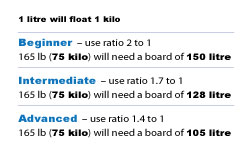
Find a local demo day to try stand up paddle boards
Seek out the following steps:
- Check with your local SUP shops: Start by checking with the SUP shops in your area to see if they are planning any upcoming demo days. You can look up their websites or social media pages, or give them a call to ask.
- Search online: You can also do a Google search for "SUP demo day near me" or "local SUP events" to see if any demo days or events are happening in your area.
- Check with local parks and recreation departments: Your local parks and recreation department may also host SUP demo days or other water sports events, so it's worth checking their website or contacting them to see if they have any upcoming events.
- Join local SUP groups: Joining local SUP groups on social media platforms like Facebook or Meetup can be a great way to stay informed about local SUP events, including demo days.
- Attend local water sports festivals: Check if there are any local water sports festivals or events happening in your area. Often, these events will feature SUP demo days as part of their activities.
By following these steps, you should be able to find a local SUP demo day and get a chance to try out different SUP boards before making a purchase.
Board improvements to note
Stand-up paddleboards (SUPs) have undergone several improvements in recent years, making them more versatile, efficient, and enjoyable to use. Here are some of the ways that SUPs have improved:
- Design: SUP designs have improved significantly, with manufacturers creating boards that are more stable, faster, and easier to maneuver. There are now boards designed for specific types of paddling, such as touring, racing, and surfing, as well as for different skill levels.
- Construction: SUP construction has also evolved, with new materials and technologies being used to make boards that are stronger, lighter, and more durable. Some manufacturers are using materials like carbon fiber, bamboo, and epoxy to create lightweight and high-performance boards.
- Inflatables: Inflatable SUPs have become increasingly popular in recent years, as they are more portable, easier to store, and more affordable than traditional hard-shell boards. Advances in inflatable technology have resulted in boards that are just as rigid and stable as hard-shell boards, making them a great option for beginners or those who need to travel with their board.
- Accessories: The accessories available for SUPs have also improved, making them more functional and user-friendly. Paddles are now available in a range of materials and designs, and many boards come with features like bungee cords, D-rings, and deck pads to make them more versatile and practical.
- Environmental impact: Some manufacturers are now using more eco-friendly materials and production methods, reducing the environmental impact of SUP manufacturing. This includes using recycled materials, minimizing waste, and reducing emissions during production.
Overall, the improvements in design, construction, and accessories have made stand-up paddleboarding more accessible, enjoyable, and sustainable for a wider range of people.
DESCRIPTION: helpful description of stand up paddle board design
LINK: http://www.surfscience.com/topics/surfboard-design/
Stand up paddle board terms:
NOSE - front end of board
DESCRIPTION: a good, simple description and purpose for various nose shapes
LINK: http://www.surfscience.com/topics/surfboard-anatomy/nose/the-nose-knows
- • Full round nose - for flat water and nose riding in waves
- • Wide short board nose - for surfing
- • Pointed nose - for cutting through chop and waves
- • Wide nose - flat water
TAIL - back end of board
DESCRIPTION: a good, simple description and purpose for various tail shapes
LINK: http://www.surfscience.com/topics/surfboard-anatomy/tail/basic-tail-shapes/
- • Squash tail
- • Bat tail
- • Square tail
- • Pin tail
- • Swallow/fish tail
- • Diamond tail
NOTE: Angular shapes provide sharper turns. Round shapes provide smoother, progressive turns.
Find out more about stand up paddle boards:
- • SUP board construction
- • Inflatable
- • SUP board fins
- • SUP shapes
- • SUP reviews
- • Paddle boards for sale
- • Custom wood SUP boards, board kits
- • "Take Apart Paddleboard" NEW style for 2014
- • SUP shops - listed
- • inexpensive paddle boards
Video on various tail styles for paddle about surfing.
ROCKER - amount of curve from nose to tail when viewing the long side of the board. Rocker is created with a strip of wood set in the middle lengthwise.
DESCRIPTION: a good, simple explanation of styles of rocker
LINK: http://www.surfscience.com/topics/surfboard-anatomy/tail/basic-tail-shapes/
- • Nose rocker
- • Tail rocker
NOTE: More rocker or curve will turn more quickly, which is favourable for surfing. Boards built for cruising and racing will have less rocker and are designed to travel straighter and faster.
HULL - underside of board
- • Flat bottom - flat water and racing
- • Vee bottom - separates the water for speed and easier to turn
- • Single concave - for surfing - decreases drag
- • Double concave - for surfing - decreases drag
RAILS - refers to the sides or edges of the board - the following link gives a really good description of how and why each style of rail does what it does.
LINK: https://www.supboardermag.com/2016/05/27/32822/
- • Soft rails - give stability and drive for leisure and beginner riders
- • Hard rails - easier to turn the board for surfing and racing for more experienced riders
NOTE: There are various rail shapes within these two categories
FINS - at the underside back of the board (link to (3D3)
DESCRIPTION: well done informative video on types of fins from SUP The Mag
DESCRIPTION: single fin
LINK: http://www.surfscience.com/topics/surfboard-fins/setups/what-to-expect-from-a-single-fin
DESCRIPTION: 3 fin thruster setup
LINK: http://www.surfscience.com/topics/surfboard-fins/setups/thruster/
DESCRIPTION: quad fin setup
LINK: http://www.surfscience.com/topics/surfboard-fins/setups/quads-offer-speed-and-more
- • Single fin
- • Two fin, three fin and four fin combinations (link to fins 3D3)
HANDLE
- • Hard boards have a recessed handle
- * Inflatable have other hand-hold systems
PLANING HULL
- • Round nose and flat bottom designed for flat water and/or speed
DISPLACEMENT HULL
- • Pointed nose designed to cut through swells and/ or waves
YouTube Video
Choose the right stand up paddle board (SUP)
Home – where it all started
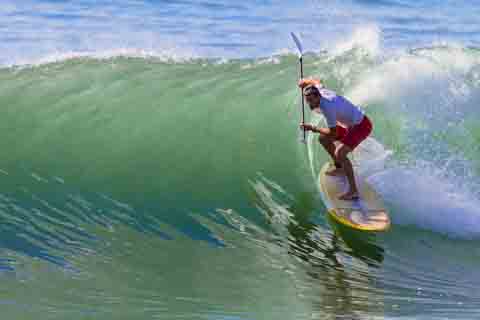
This website is for sale. For information go to:
Buy-standuppaddleboardingguide.html
DuckDuckGo Search
2014 - Most recent Review - Shark 2s
Amazon devicesSee BLUEFIN SUP Fleet
5 year warranty,
60 day returns.
Free global shipping!
Learn more about Bluefin Sup inflatables
Dear Visitors
Should you click on an ad, it make generate a small commission at no cost to you. It helps keep our website free for all users. MANY THANKS!
O'Neil Wetsuit
https://amzn.to/3wekRsh
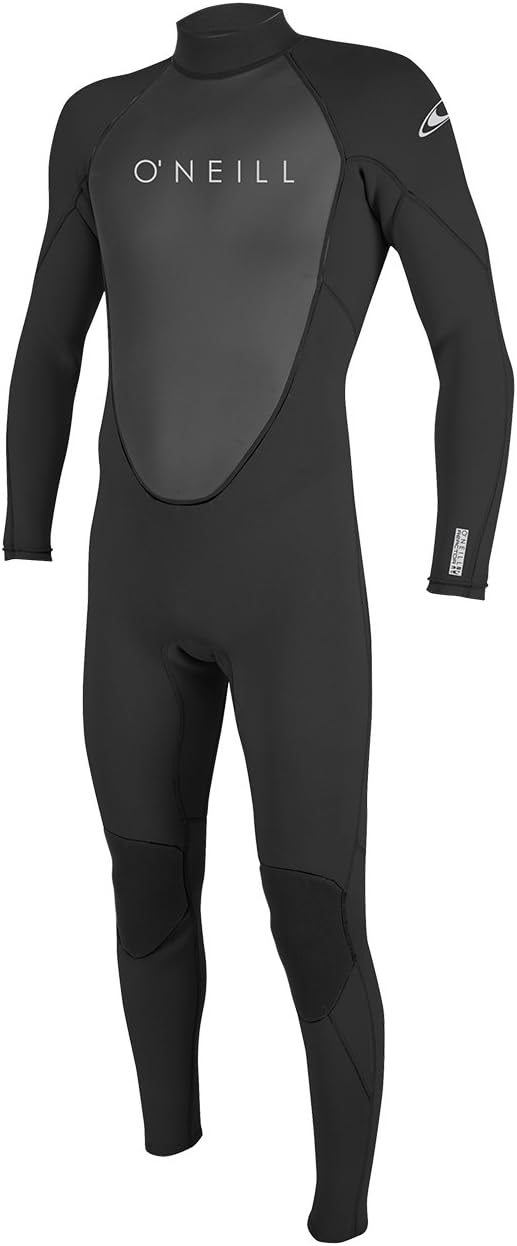
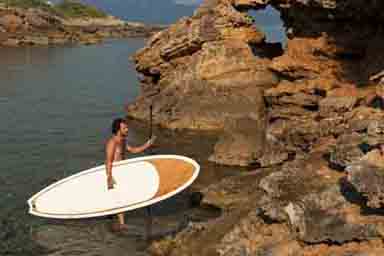
Angular tail shapes provide sharper turns in the waves. Note the swallow/fish tail above.
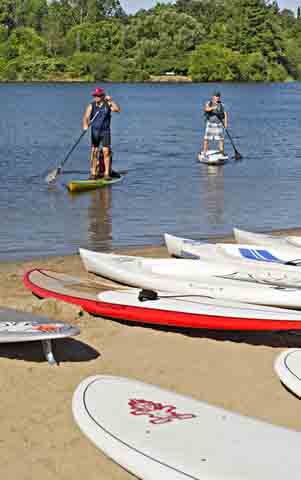
Experiment with 3 or 4 boards at a demo to quickly see where your comfort level is.
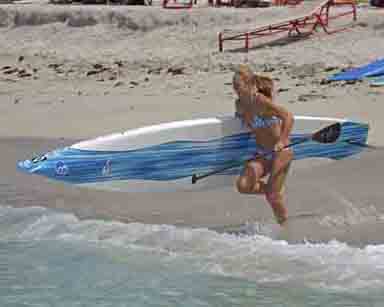
Perfect example of a board built for racing – long and narrow with a pointed nose (above).
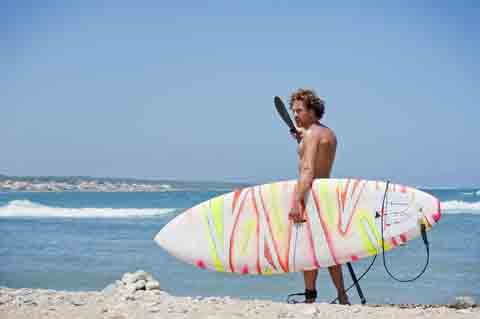
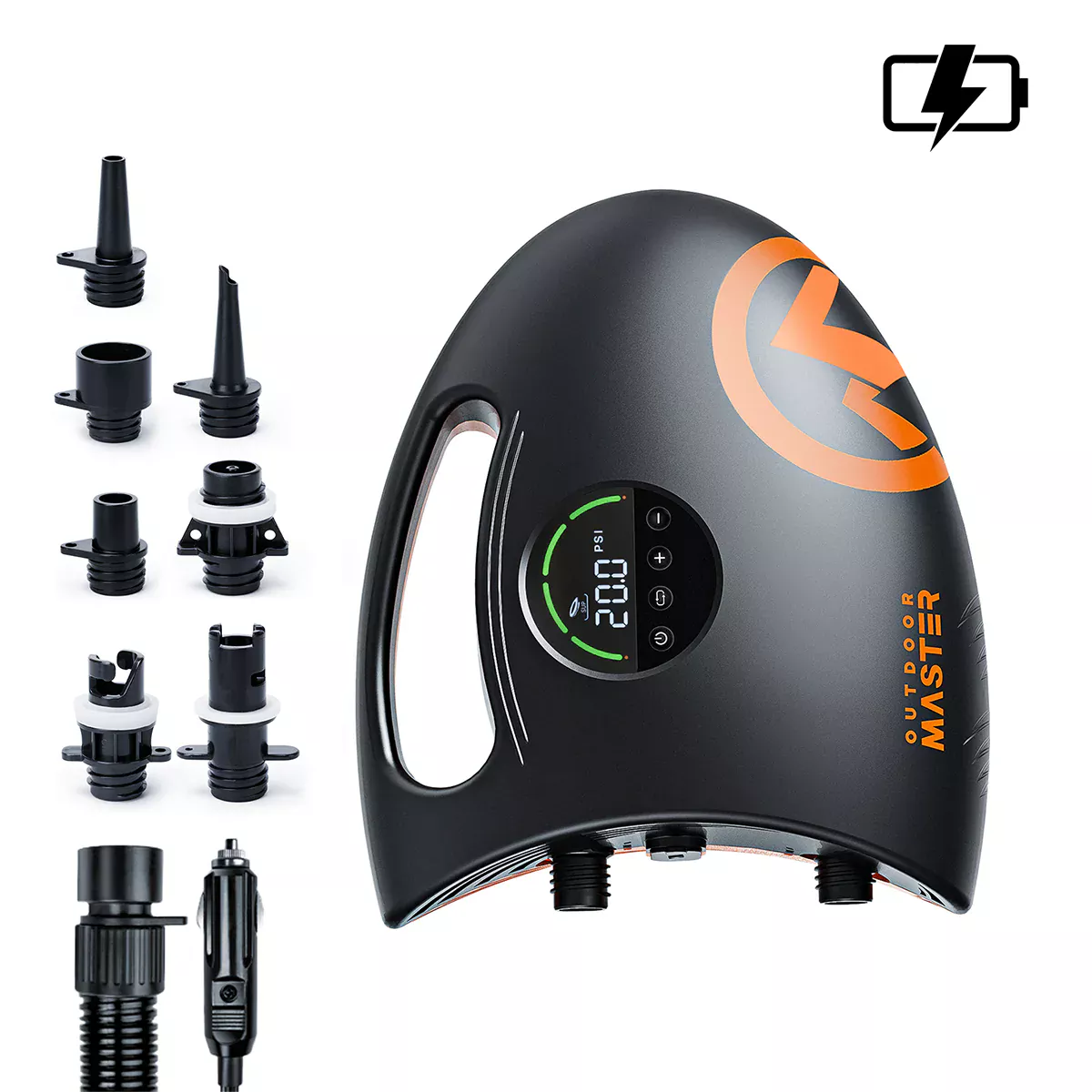
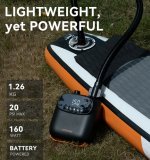
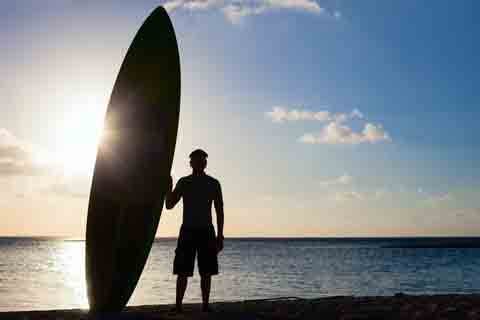
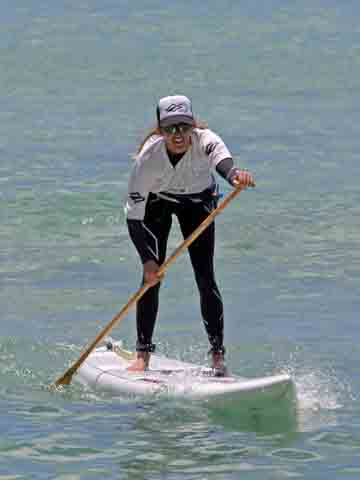
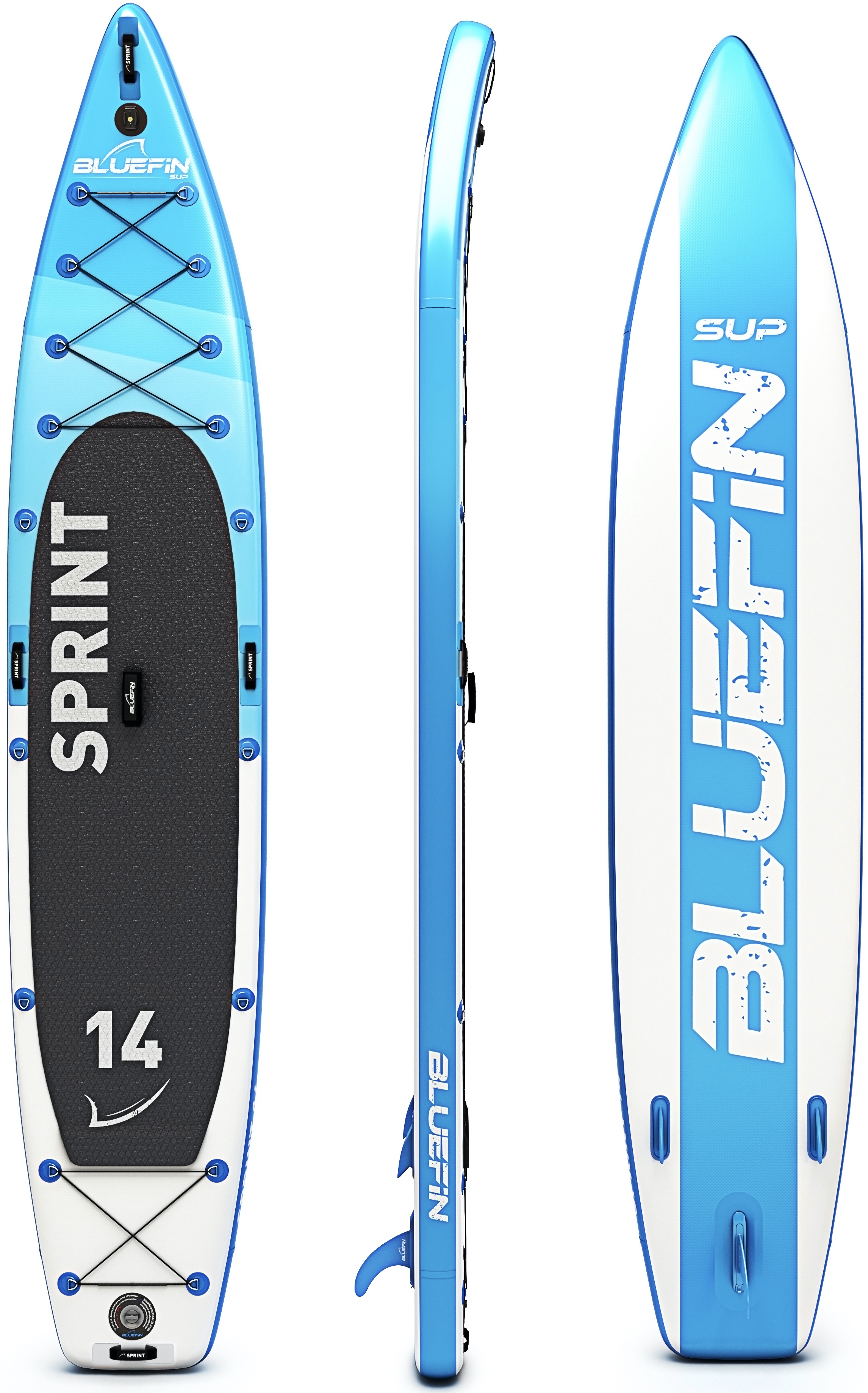
New! Comments
Have your say about what you just read! Your paddle boarding comments, stories and ideas are valued! Many thanks!